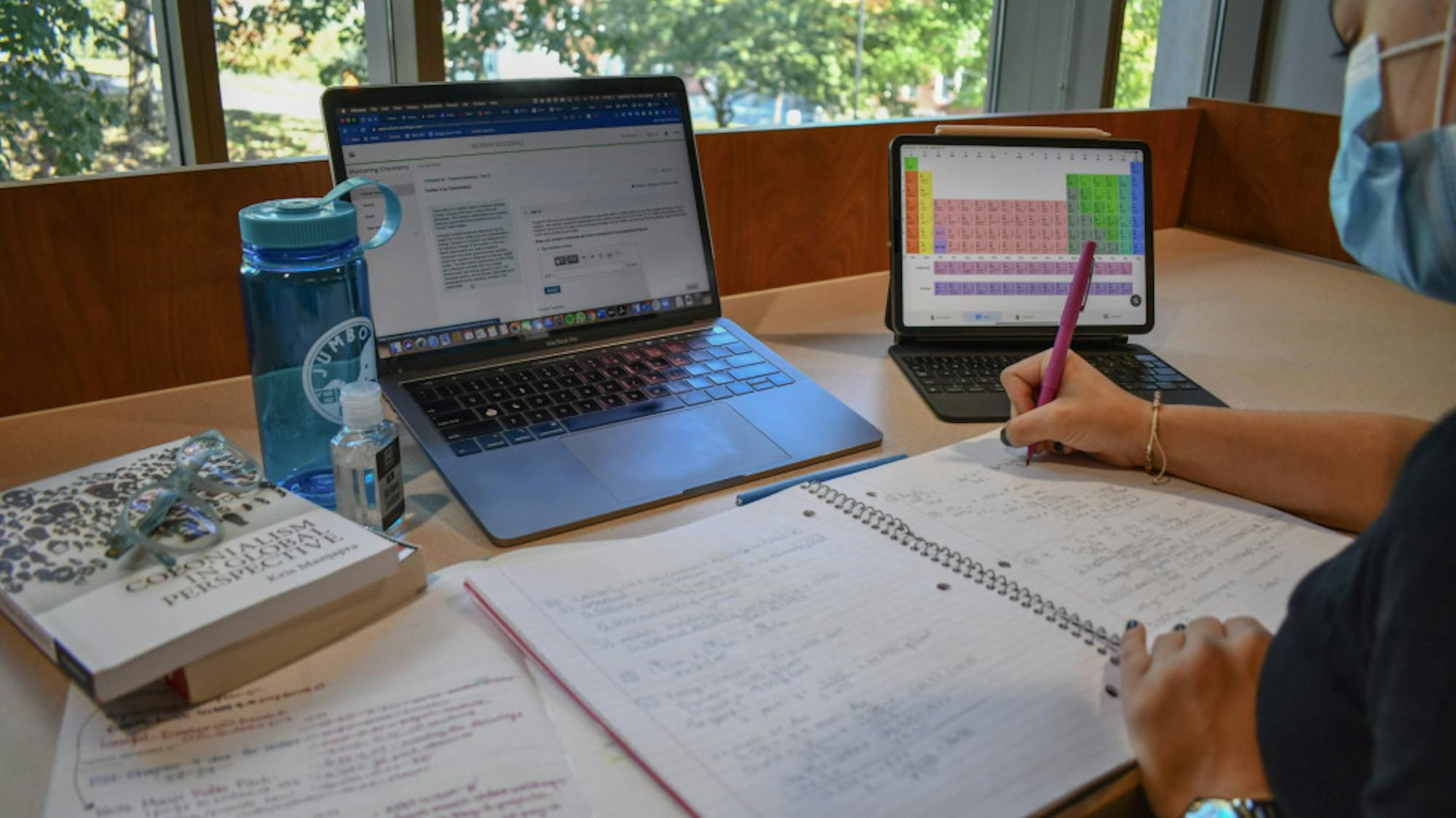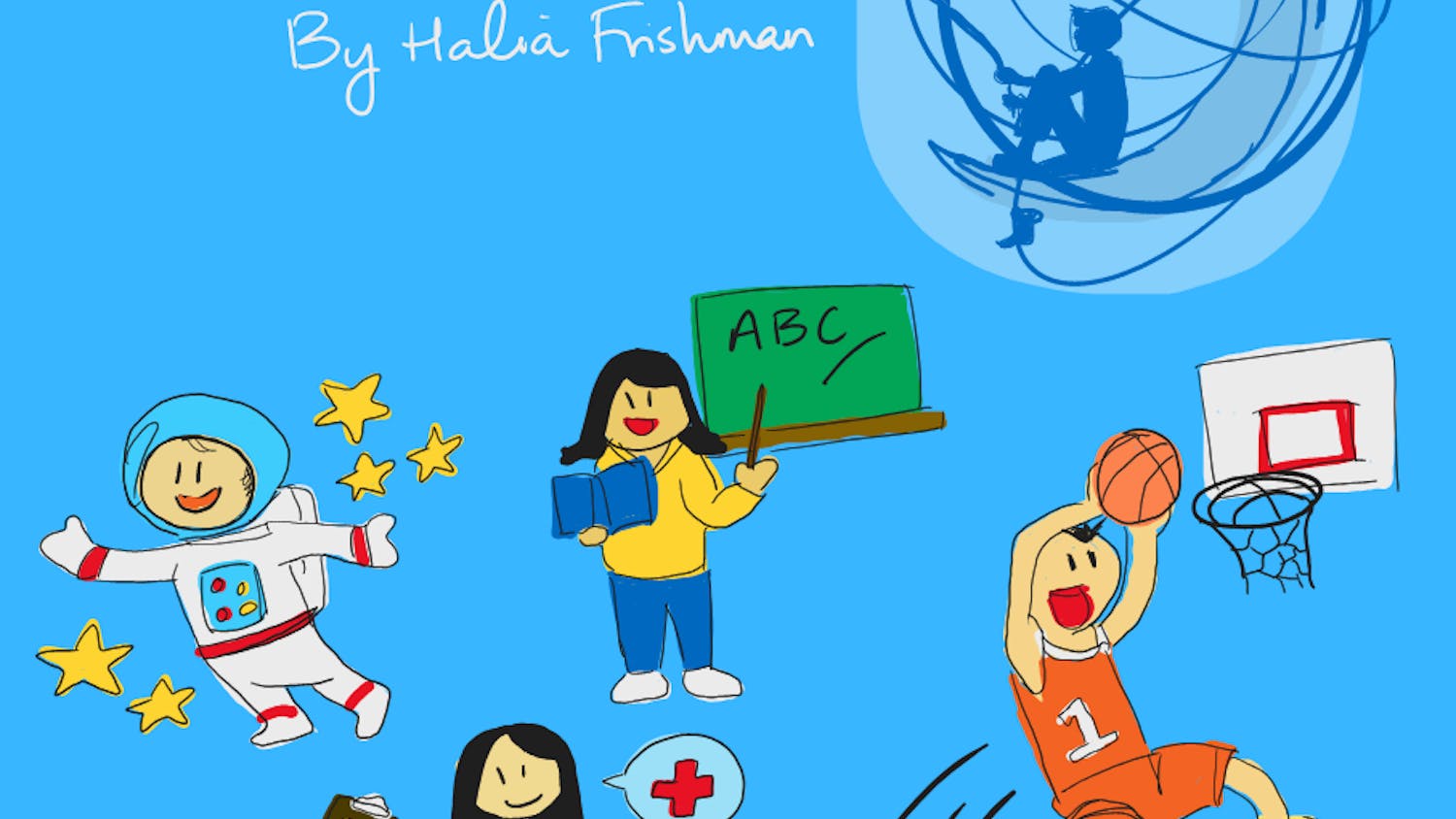What is a midterm assessment at Tufts? Is it the paper we are given a week to write? Is it the blue book exam we take in the middle of the semester? Is it the online assessments given periodically throughout the course?
At Tufts, the midterm period seems to typically last from October to the end of the semester. Students often feel that they are caught up in exams and papers for most of the semester. Each professor has their own philosophy and techniques on how they believe students should most successfully be assessed. While some prefer written, sit-down exams, others reject this approach and prefer a more creative project to allow students to demonstrate their mastery of course material.
“[My] exams are meant for them [students] to be able to show off … what they've learned, not what they haven't learned,” David Proctor, distinguished senior lecturer in the history department said.
Proctor believes, in his survey courses, that a written blue book exam is the most effective way to give students the opportunity to demonstrate their comprehension and mastery.
“The way I organize my survey courses is to basically divide the course up into three sections. So in October, there's what I call an early exam, in November, there's a term exam and then there's the final exam,” Proctor said. “None of these are cumulative in my courses because I don't actually pedagogically believe that cumulative exams really show anything.”
He explained that he wants his students to use each exam as an opportunity to learn for the next time, which is why there are multiple throughout the semester.
“From my perspective, to wait till we're halfway through to give the first exam really doesn't give students a chance to understand what my expectations are for them to get a sense of what my exams are like. And I don't like to place so much emphasis on one or two items,” Proctor said.
In his 27 year tenure, Proctor has tried different forms of examination such as a take-home exam; however, he does not see students perform as well on these, averaging around 8–10 points lower.
“What I find is that if you give an in-class exam, it actually makes you focus a little bit more, maybe spend a little bit more advanced time preparing,” Proctor said.
In opposition to Proctor’s emphasis on in-person exams, Calvin “Chip” Gidney, associate professor in the Elliot Pearson Department of Child Study and Human Development, prefers to give frequent take-home “quizzes” after every two textbook chapters to assess students.
“Maybe 10 years ago I read an article in the Chronicle of Higher Education, … which talked about research that suggests that the best way to test for retention in classes … is instead of waiting and having four chapters that are tested on, to go every two chapters,” Gidney said. “I even called them quizzes just to make them seem … less frightening to students.”
Gidney leaves his exams open on Canvas for two weeks and allows students to take the quiz as many times as they want. After completing it, students are able to see what they got wrong but cannot view the correct answer.
No two quizzes are the same, and students can deduce from this information if they would like to retake the test. He prefers this method because it has reduced much anxiety and mental health issues that he witnessed students endure when he gave in-person exams.
“Students have told me that they appreciate that because it allows them to study, it allows them to see how well they know it, and they know what they have to study because you can … study in between taking it. So that's really cut down on a lot of student mental health and anxiety problems with respect to my class,” Gidney said.
Gidney has also altered how he tests his students over the years. When he noticed that traditional midterms were not a good fit for the well-being of students, he altered his syllabus.
“When I arrived at Tufts and began giving the intro course, I did very much follow the older, traditional model of, we would have a midterm and we would have a final, and boy, they were stressful events — stressful for students, stressful for TAs having to grade them and deal with the fallout of them,” Gidney said. “It was a lot of information. Students forgot the information. You're being tested in November, on stuff that you did in September, right. So it just was a lot to hold in mind.”
He explained that although in most of his upper level courses, students are tested through written assessments, in his introductory courses, test taking is paramount to gaining the expertise needed to be prepared for success in upper level courses.
“I have to make sure that students have an understanding, at least an introductory understanding to the basic concepts and the fundamental ideas in the field. And that's why I give that type of exam because it's very content focused. It's very — ‘can you recognize a definition of it? Can you provide a definition of it,’” Gidney said.
Gidney emphasized that he wants students to walk away feeling positive about the course material and not stress over the exam.
“I want students to experience success, and I want them to experience the joy of learning new things about interesting topics and subjects,” Gidney said. “I feel that especially in the intro course, since our goals are to have students understand the fundamentals [and] have them fall in love with our discipline of child study and human development, … the type of testing that I’ve come up with seems to work pretty well.”
Samuel Sommers, professor and chair of the Department of Psychology, uses a combination of Proctor and Gidney’s approaches. He organizes his Introduction to Psychology course with three non-cumulative exams during the semester instead of one midterm and one final. Like Professor Gidney’s, Professor Sommers' exams are also a take-home format.
“We do the exams now in Psych 1 as online, Canvas exams that are open-book. That was made necessary by the pandemic, but there are certain advantages of doing it that way for various reasons, as long as the exam is structured a certain way,” Sommers said. “Obviously, you do it online and you are worried about academic integrity. So I think you have to give a certain type of questions. If it's a bunch of fill in the blank questions, people will just Google those even if you tell them not to, or take the test together. So I think you have to try to avoid those.”
Barbara Wallace Grossman, professor of theatre and performance studies in the department of Theatre Studies does not give any form of test, opting instead to employ creative projects that allow students to demonstrate their knowledge.
“I can still remember with the shudder at the blue book exams that I took throughout my college career, and I loathed them and I've always felt that a blue book test is just not the best kind of assessment for my students,” Grossman said.
She has also searched for a way of assessing her students without threatening their mental health.
“I'm looking for a way without compromising my standards and without compromising my goals for the course to make it a humane experience where somebody can be challenged but not overwhelmed,” Grossman said.
This fall for her course, Imagining the Holocaust on Stage and Screen, the midterm was called “Suitcase Sharing.” In this four-part assignment, students were asked to watch a Holocaust survivor’s testimony on the USC Shoah Foundation’s IWitness website, then imagine themselves as the survivor and pack a suitcase as if they had been asked by the authorities to leave the next day. They then had to write and film a four minute monologue as the survivor to submit to Canvas along with a 1000 word paper.
Grossman explained that she likes this mode of assessing better because it allows each student to have more agency.
“Whenever I create a midterm or final project, I always try to create something that's structured, and focused and purposeful. But where there's also flexibility and there are options so that students have agency,” Grossman said.
Although Proctor, Gidney, Sommers and Grossman each have unique pedagogical philosophies on what a midterm means and how students will best perform on an assessment, they each have carefully crafted their courses so that their students will benefit the most. To them, creating a midterm that sets students up for the most success is critical.
“Every faculty member has a slightly different perspective, I think at points. And no one in my mind is necessarily better than the other,” Proctor said. “We each do what we think is going to benefit our students the most. And I would say at the end of the day, that is what's important.”






